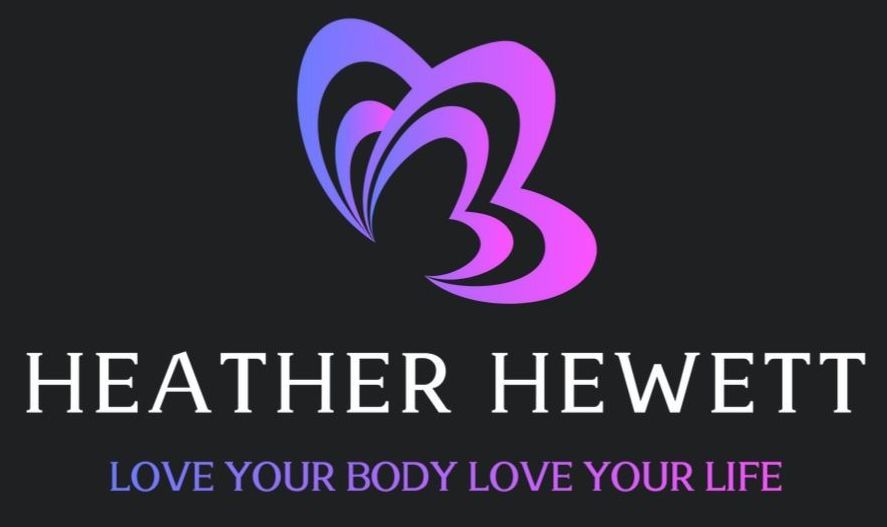What is True Hunger and How Can You Identify the Signs of it?
True hunger is the body’s natural signal that it needs nourishment, driven by physiological changes that reflect a need for food. Unlike emotional hunger, which can be triggered by external factors such as stress, boredom, or environment, true hunger presents itself as physical symptoms like a growling stomach or fatigue. Understanding and recognizing these signals is crucial for maintaining a healthy eating pattern, ensuring you only eat when your body needs fuel, and avoiding overeating or emotional eating. This guide will help you identify the symptoms of true hunger and how to manage them effectively to nourish your body and maintain a balanced diet
Understanding hunger isn’t just about eating when you're hungry; it’s about understanding what kind of hunger you’re experiencing. We live in a world where food is available all around us, but emotional, habitual, and situational cues often influence when and what we eat, rather than our bodies’ true need for nourishment. True hunger is different. It’s the body’s natural request for food, signaling that it requires fuel to function properly. On the other hand, emotional hunger often arises suddenly and is linked to specific cravings and external triggers, such as stress or boredom.
This guide is designed to help you better understand true hunger, how to identify its signs, and how to differentiate it from emotional hunger. By the end of this article, you’ll have a clearer understanding of when your body is genuinely hungry and how to respond accordingly to make healthier eating decisions.
Why True Hunger Matters in 2025
In 2025, we are living in a world where food is both more accessible and more processed than ever. Many of us are busy with work, family, and daily responsibilities, making it easy to miss the physical signals that indicate true hunger. Emotional and habitual eating has become common as stress levels rise, leading people to eat for comfort rather than nourishment.
True hunger matters because it helps us avoid overeating, which is a major contributor to health issues like obesity, heart disease, and metabolic imbalances. Understanding the difference between true hunger and emotional cravings can prevent unhealthy eating patterns. By learning to listen to your body, you can make decisions that nourish and sustain your body, supporting long-term health.
"Research suggests that many people struggle to differentiate between emotional and physical hunger, which can lead to overeating and unhealthy eating patterns."
How to Identify and Manage True Hunger
Knowing how to identify and respond to true hunger is essential for making health-conscious decisions. Here’s how to recognize the signs of true hunger and distinguish it from emotional eating.
1. Recognize Physical Symptoms of True Hunger
True hunger doesn’t hit suddenly; it builds over time. It’s important to listen to your body’s cues and recognize when hunger is truly physical. Common physical symptoms of true hunger include:
- Stomach Growling: This is perhaps the most well-known signal. When the stomach is empty, it may begin to make noises or rumble, which is a sign that it needs food.
- Low Energy or Fatigue: Lack of nourishment causes energy levels to drop, making you feel sluggish, tired, or weak.
- Irritability: Also known as "hanger," this is a common symptom when blood sugar levels dip due to lack of food, resulting in mood swings or irritability.
- Light-headedness: If you’ve gone a while without eating, you may feel dizzy or light-headed, which signals that your body’s energy reserves are depleted.
These physical cues are the body’s way of communicating that it’s time to refuel. True hunger doesn’t demand specific foods but can be satisfied with a variety of nutritious options.
2. Use a Hunger and Fullness Scale
The Hunger and Fullness Scale is a tool that helps you measure your hunger on a scale of 1 to 10, where 1 represents "starving" and 10 represents "extremely full." This scale is helpful in identifying whether you’re truly hungry or simply eating out of habit.
Before eating, ask yourself: How hungry do I really feel? Are you at a 3, where you feel mildly hungry but could still wait? Or are you at a 7, where you’re already comfortably full? This scale can help you assess your hunger level before deciding to eat, encouraging you to stop when you’re satisfied, rather than when you’re full.
3. Differentiate Emotional Hunger from True Hunger
One of the biggest challenges people face is distinguishing emotional hunger from true hunger. Emotional hunger can arise suddenly and may be linked to specific cravings for comfort foods, especially those high in sugar, fat, or salt. Emotional hunger is often driven by external factors like stress, sadness, or boredom, and it doesn’t come with physical symptoms like stomach growling or fatigue.
In contrast, true hunger builds gradually. It’s not tied to specific cravings but to the body’s natural need for nourishment. If you feel the urge to eat suddenly, and it’s paired with a craving for chocolate or salty snacks, it’s likely emotional hunger.
To differentiate between the two, take a moment to reflect on the following:
- Is the hunger sudden, or has it been building gradually?
- Do I have a craving for something specific, or would I eat anything right now?
These simple questions can help you determine whether you are experiencing emotional or true hunger.
4. Practice Mindful Eating
Mindful eating involves paying attention to the experience of eating what you eat, how much you eat, and how you feel during the process. It’s about slowing down, savoring each bite, and listening to your body’s hunger and fullness signals. Eating mindfully can help you become more in tune with your body’s needs and prevent overeating.
Some tips for mindful eating include:
- Eat without distractions: Avoid eating while watching TV, working, or using your phone.
- Chew slowly and savor each bite: Take your time to enjoy the flavors, textures, and smells of your food.
- Pay attention to your fullness cues: Stop eating when you feel satisfied—not full.
Mindful eating helps you recognize when you’re truly hungry and when you’re eating out of habit or emotion.
5. Hydrate First
Many people confuse thirst with hunger. If you’re feeling hungry, try drinking a glass of water and waiting for 10-15 minutes. If the sensation of hunger goes away, it may have been thirst rather than true hunger. Staying hydrated throughout the day also helps manage hunger and prevent overeating.
Common Mistakes and How to Avoid Them
Even with a good understanding of hunger, people often make common mistakes when it comes to managing their hunger signals. Here are some common mistakes and how to avoid them
1. Confusing Emotional Hunger with True Hunger
Emotional hunger is often sudden and tied to specific cravings, while true hunger builds gradually. To avoid confusion, ask yourself whether your hunger is driven by physical signals or emotions. If it’s the latter, it’s emotional hunger, and taking a break to engage in an activity like walking, talking with a friend, or relaxing can help.
2. Ignoring Hunger Signals
In our busy lives, we often ignore hunger signals, thinking that we can push through or skip meals. However, ignoring hunger can lead to overeating later. The key is to respond to your body’s signals by eating when you’re hungry. Skipping meals often leads to cravings or overeating when you finally eat.
3. Overeating Due to Misjudging Hunger
Sometimes we misjudge our hunger and end up eating too quickly or too much. This can lead to discomfort and digestive issues. To avoid overeating, slow down, chew your food thoroughly, and pay attention to how your body feels. Use the Hunger and Fullness Scale to help assess your satisfaction levels before finishing a meal.
Top Tools and Resources to Understand True Hunger
- Hunger and Fullness Scale: This scale helps you track your hunger levels, making it easier to identify when you’re truly hungry and when to stop eating.
- Mindful Eating Apps: Apps like Headspace or
MyFitnessPal encourage mindful eating and help track food intake while focusing on hunger cues.
- Nutrition Guides: Trusted sources like The Academy of Nutrition and Dietetics offer in-depth articles and advice on how to recognize true hunger and nourish your body effectively.
FAQ Section
1. How can I tell if I’m truly hungry or just bored?
True hunger develops gradually and is marked by physical signs such as stomach growling or low energy. Emotional hunger, on the other hand, often strikes suddenly and is linked to external cues like boredom or stress.
2. Can emotional hunger affect my health?
Yes, emotional hunger can lead to overeating, poor food choices, and nutrient imbalances. By recognizing emotional hunger, you can address the emotions without resorting to food.
3. How can I avoid eating out of habit?
Focus on eating when you're physically hungry, not just because it's mealtime or out of habit. Use tools like the Hunger and Fullness Scale to assess your hunger level before eating.
4. What are common symptoms of true hunger?
Common symptoms of true hunger include a growling stomach, light-headedness, low energy, and irritability. These symptoms build gradually, signaling that your body needs nourishment.
5. How does true hunger impact my nutrition?
Recognizing true hunger helps you make better food choices and ensures you eat when your body needs nourishment, promoting overall health and balanced nutrition.
About the Author
Heather M. Hewett is a double board-certified Traditional Naturopath and Clinical Nutritionist with over 22 years of experience in holistic health and wellness. She specializes in gut microbiome nutrition, weight loss, and somatic emotional regulation, offering a compassionate and comprehensive approach to health coaching. Through personalized one-on-one coaching and group programs like "Love Your Body, Love Your Life!" and "The Resilience Circle," Heather empowers individuals to transform their relationship with food and their bodies, fostering emotional resilience and autonomy. Her integrative methods aim to create a vibrant foundation of health that honors each client's unique life story.





